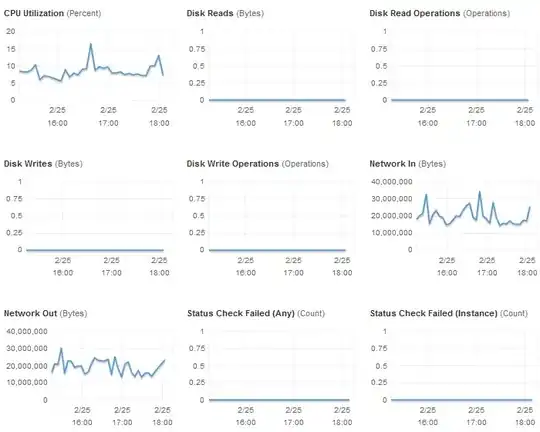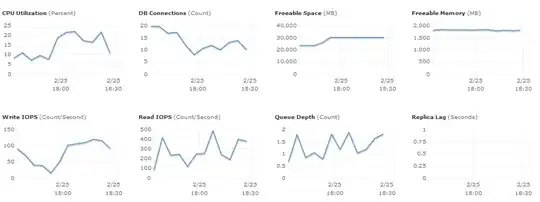We recently moved to Amazon Web Servers and are still learning our way around. Our EC2 Web instance and our RDS MySQL instance (right now we only have 1 of each) seem to be chugging along okay. But I was wondering if we could get even better performance out of them.
We do run a very small site, but certain pages still take awhile to load because of lots of aggregation on the MySQL side.
Here is what our current stats look like:
EC2 Webserver Usage (c3.large)

RDS (MySQL) Usage (db.m1.large)

Of these, only the DB (db.m1.large) is "Provisioned IOPS Optimized".
Do non-"PIOPS Optimized" instances still benefit from Provisioned IOPS? Or should we consider a different instance type for our EC2 Webserver?
With these stats, do we even need Provisioned IOPS? Would we see any benefit?
If Provisioned IOPS will help, how do I know how much I need? How could I test this?